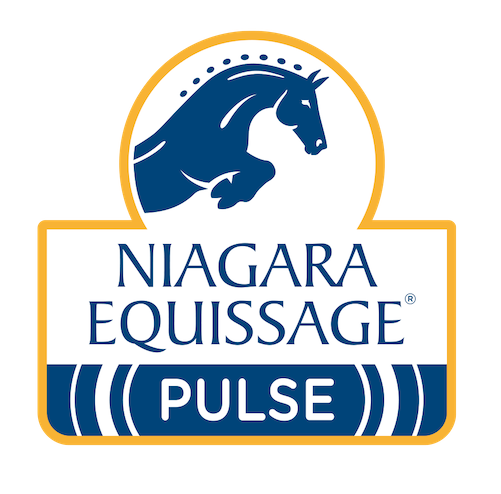Horse Colic
Horse Colic is a general term used to describe signs that indicate pain in the gastro-intestinal tract.
There are a large variety of physical causes of horse colic including;
- Impaction – e.g. of feed or worms
- Olvulus – rotation of the gut
- Torsion – twist in the gut
- Thromboembolic – blood clot
- Hypermotility – over-activity of the intestinal tract
- Strangulation – disruption to the blood supply
Symptoms of horse colic
- Increased temperature
- Increased heart rate
- Increased respiratory rate
- Patchy sweating
- General Distress – e.g. horse looking at his flanks, kicking the abdomen, repeated rolling and restlessness
Anatomical predisposing factors include the unfixed position of the left colon, narrowing of the right dorsal colon, the caecum blind sac, upward movement of ingesta, the long mesentery of the small intestine and the inability to vomit.
Management factors involved in horse colic include diet, diet changes, environment (e.g. box, pasture, sandy soil, weather conditions), exercise routine changes, and vices e.g. windsucking.
Certain physical conditions can predispose horse colic, for example, a heavy intestinal worm burden, teeth problems and scrotal hernias in colts.
Can Niagara Equissage help with Horse Colic?
Yes
However, please use with absolute caution as the use of Niagara Equissage should only be considered in a spasmodic case – and then only if the discomfort present in the horse is mild. While many horses quite regularly get “a bit colicky” and there is often no need to call a veterinary surgeon as owners are quite able to manage the condition themselves, obviously there are times when swift veterinary intervention is of utmost importance, such as when a twisted gut or impaction is suspected. A seemingly mild spasmodic colic can readily result in a twist.
Niagara Equissage cannot correct a twist – surgery is required. Its use will only make a bad situation worse.
If used when there is an impaction, there is the theory that the massaging effect will help to clear the impacted material by stimulating the muscles of the gut (peristalsis) into moving the mass that has built up. However remember that whilst the impacted material is in situ the body continues to absorb moisture from it so all the time the impaction is becoming more difficult to move. By trying to stimulate the body into forcing the material along the intestinal tract whilst it is so hard can cause damage to the gut lining as well as adding to the pain the horse will already be in.
Application
In a mild case of acute horse colic the gentle massaging effect – by using the Back Pad on a low setting for a few minutes – can help to ease the muscular spasms of the gut wall particularly in cases where the most likely cause of the colic can be attributed to a stress-related issue (such as a sudden change in routine, a fright or travelling) or eating too soon after strenuous exercise. It is not advisable to apply the Back Pad for long periods at a time; much better to use for just 5 minutes every 20 minutes. This allows Niagara Equissage to have an effect, but not be too much of a stimulant which could compromise the condition and also allow the owner to assess the situation.
In more severe cases, once the horse’s condition has been effectively stabilised and has remained so for several hours, then the Back Pad can be used on a low setting for 20 minutes for the next few days to help relieve and soothe tender muscles as well as restore and promote good circulation.
If surgery has been necessary, then Niagara Equissage is a wonderful therapeutic tool to help restore the horse to full health. A horse that has been through the rigours of surgery will be quite tender and a gentle massage will help to soothe and relax muscles. Until sutures are removed then use of the Hand Unit alone is recommended on the upper body and lower legs.
As stall rest is necessary for a period of time, the benefits to the horse are immeasurable. The use of Niagara Equissage can guard against stiffness and filled legs, promoting muscle tone and good circulation. Regular use of Niagara Equissage as part of the horse’s daily management routine will see them happy and relaxed which in turn will help to retain a healthy appetite and promote normal bodily functions. Do not be tempted to use a setting that is too high; No.3 – No.4 is quite sufficient, certainly until the horse is well recovered. Niagara Equissage can remain part of the daily routine as the horse returns to work.
For the stall-rested horse, Niagara Equissage can be safely used 3 times a day, although a lower setting is recommended for no longer than 20 minutes each time so as not to over-stimulate. Localised use of the Hand Unit can help with horses that are prone to tightening of the hamstrings and back muscles, as well as on the neck muscles.
Point to Note: If you have used your Niagara Equissage machine to treat horse colic prior to calling the vet, you should advise of this.

Testimonials
See All- “We use the Niagara Equissage a lot. The horses really like it and it helps to loosen them up before we ride and show.”
- The circulatory benefits I see from the Back Pad creates an essential foundation of muscle relaxation on which to work. TheHand Unit is very efficient in targeting specific areas prior to addressing muscle/soft tissue problems such as trigger or stress points. Niagara Equissage is an important partner in my work to achieve performance improvement for my clients.
- "I find the horses love their treatment with the Niagara Equissage. I like the way the Back Pad massages the full body of the horse. We use it all the time and there are NO negatives."

